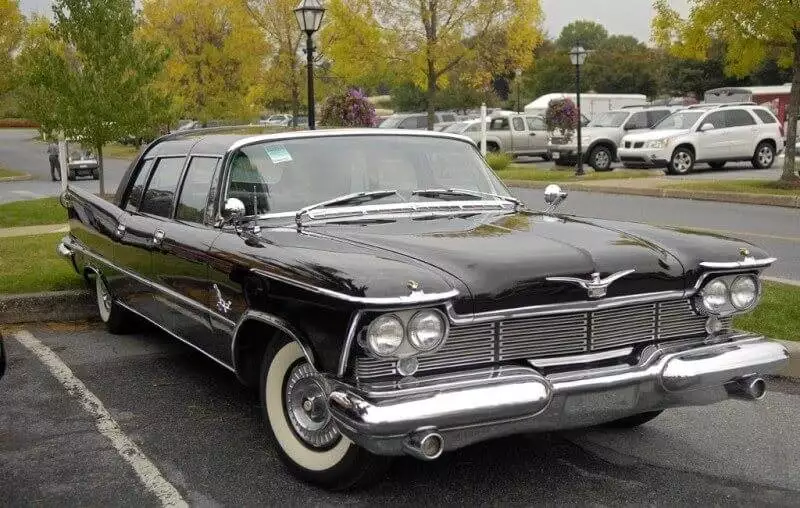In the early 1950s, Chrysler Corporation decided that they had to have an upscale model to compete with Chevrolet’s Cadillac and Ford’s Lincoln brands. These flagship brands generated a considerable amount of profit for their respective companies and Chrysler wanted ta piece of the action. In this climate, Chrysler pulled the Imperial brand out of the bullpen and launched it as its brand with no Chrysler badging attached. This met with limited success, with most people still referring to the cars as Chryslers, but, the cars still sold, but not in the quantities to be profitable for Chrysler.
More...
The Early Years
According to our source at Fullerton Chrysler Dodge (Somerville, NJ), the Imperial nameplate actually goes back to 1926 and was originally created in order to compete with the luxury models the other manufacturers were making. It might never have had the exotic 12- and 16-cylinder engines offered in other top tier American luxury cars but the Imperial did a good job of competing by being a bit different from the competition. The brand continued on into the 1930s when Chrysler corporation discovered the advantages of aerodynamics and applied it immediately. Driven by unchecked the unchecked enthusiasm of Walter Chrysler, the “AirFlow” design concept swept through the Chrysler, Plymouth, Imperial, and Desoto brands. Later in the 1930s and into the 1940s, Chrysler dropped the airflow concept due to poor customer feedback.
1955

Via autoweek.com
The Imperial became its own brand in 1955. These new Imperials were designed by Virgil Exner and were hailed by Chrysler as 'The Finest Car America Has Yet Produced.' A very bold statement considering some of the fine cars produced from Packard, Cadillac, and others. The 1955 Imperial was advanced. It was Chrysler’s first vehicle to have a wraparound windshield. The Imperial was a high priced vehicle for its time, costing $4,483 for the four-door sedan, over $500 more than the Cadillac Series 62. Even though it was pricy, it offered items as standard equipment that was optional on other vehicles. The Imperial Newport hardtop coupe sold for roughly $4,720.
1957

Via wikipedia.org
The 1957 Chrysler Imperial is probably one of the most famous and popular Imperial in history. Styling was once again handled by Virgil Exner. Like most of Detriot, tailfins could be found in the rear of the vehicle. The curved door glass was not only creative, but they were also the first in the industry. The long, stylish front hood hid a giant 392 cubic inch V8 capable of producing 325 horsepower. The Hemi V8 version produced 350 horsepower. In 1957, the new TorqueFlite transmission when coupled with the V8 powerplant could propel the large Imperial from zero to sixty miles per hour in 9.8 seconds easily beating the nearest competitor. Its top speed of 125 miles per hour was also unmatched. 35,734 Imperials were produced in 1957, the best year Chrysler would have with this vehicle.
1958
In 1958, the Imperial's most obvious difference was its new extruded aluminum grille. Composed of six banks of slim, open rectangles stacked six high, the new grille was set over a simpler, though still multi-piece, bumper, a filled-in variant of the previous biplane style. That said, other trim changes were minimal. The diecast molding streaming back from the fender crown was longer and acquired a curious indented section, wheel cover center rings changed from black to white with crown centers. The Flight-Sweep "tire" acquired an attractive new eagle center, but the standard deck lid displaced large block letters to spell out Imperial.
Engineering changes also were limited. The engine compression ratio was upped to 10:1, horsepower to 345. All 1958 Imperials also employed the lower, shorter, and lighter four-barrel carburetor and off-center, spool-type front engine mounts released as running changes during 1957. The power steering gear was new, too. New options included electric door locks, a remote-control outside rearview mirror, Sure-Grip limited-slip differential, run-flat Captive Air tires, and the precursor of today's cruise control, Auto-Pilot. Division officials claimed Auto-Pilot saved up to 15 percent on gas, a statement given credence when an Imperial Crown again took top honors in the 1958 Mobilgas Economy Run. This marked the third straight year Imperial had won the event, making Imperial the first three-in-a-row champion since the six-cylinder supercharged Grahams of 1936-1938. As we shall see, Imperials and Grahams would soon be linked anew.

